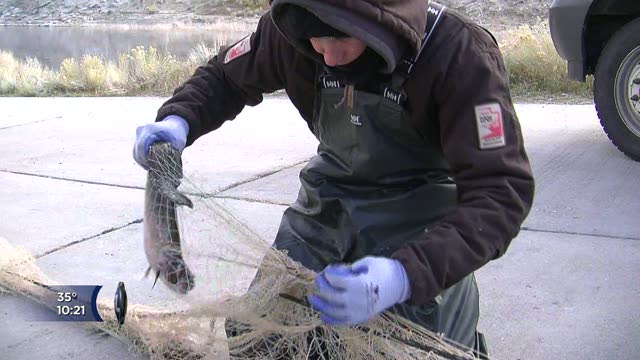Estimated read time: 2-3 minutes
This archived news story is available only for your personal, non-commercial use. Information in the story may be outdated or superseded by additional information. Reading or replaying the story in its archived form does not constitute a republication of the story.
MANILA, Daggett County — State wildlife officials say they are turning the tide in a fight against a species of fish they once feared might take over Flaming Gorge Reservoir.
The battle against the burbot has been waged with the help of anglers, and it’s starting to show results.
"We do have a gradual decline in the population and it’s probably most likely a result of angler exploitation,” said Ryan Mosley, Flaming Gorge project manager for the state Division of Wildlife Resources. "Anglers have really waged war on burbot in the reservoir.”
Over the course of three days this week, wildlife officials from Utah and Wyoming worked together to survey burbot numbers in the 91-mile reservoir that straddles the state line. They netted only 137 of the eel-like fish, Mosley said.
- A cod-like fish that inhabits fresh waters.
- Nicknamed "poor man's lobster."
- Predator fish -will attack fish that are almost its own size
- In America, most often found in northern states. Common in Lake Erie.
- When cooked, its meat tastes similar to lobster.
Information: Wikipedia
For unknown reasons, burbot were illegally dumped into the Green River system in Wyoming and reached Flaming Gorge in 2006. The voracious predators subsequently experienced a population explosion, ambushing many of the sport fish that make the reservoir a destination for anglers.
"There’s really nothing we haven’t seen … in a burbot’s stomach,” Mosley said.
One species that has been hit hardest by the burbot is the kokanee salmon. That’s particularly worrisome for the DWR, which is trying to boost kokanee numbers at Flaming Gorge.
"We’ve seen kokanee in (the burbots’) stomachs from eggs all the way to adults, so that concerns us,” Mosley said.
An 18-inch female burbot can produce about a million eggs a year, Mosley said. By comparison, a kokanee of similar size will only produce about 2,000 eggs annually. That’s one reason officials have set no limit on the number of burbot that anglers can take from the reservoir.
Ashley Bonser, owner of Addictive Fishing LLC and Flaming Gorge Charters, caught his first fish at Flaming Gorge when he was 4 years old. The illegal introduction of burbot into the reservoir created a possible disaster for the fishery, he said.
"It’s a sad thing to see,” Bonser said, adding that he’s dedicated to removing burbot from the reservoir.
"Everybody can catch these fish,” he said. "I mean they’re easy to catch.”
As an added bonus, Bonser said, burbot are also delicious.
"They’re phenomenal to eat,” he said. "They’re one of the best eating fish out of Flaming Gorge Reservoir.”
Email:gliesik@desnews.com







